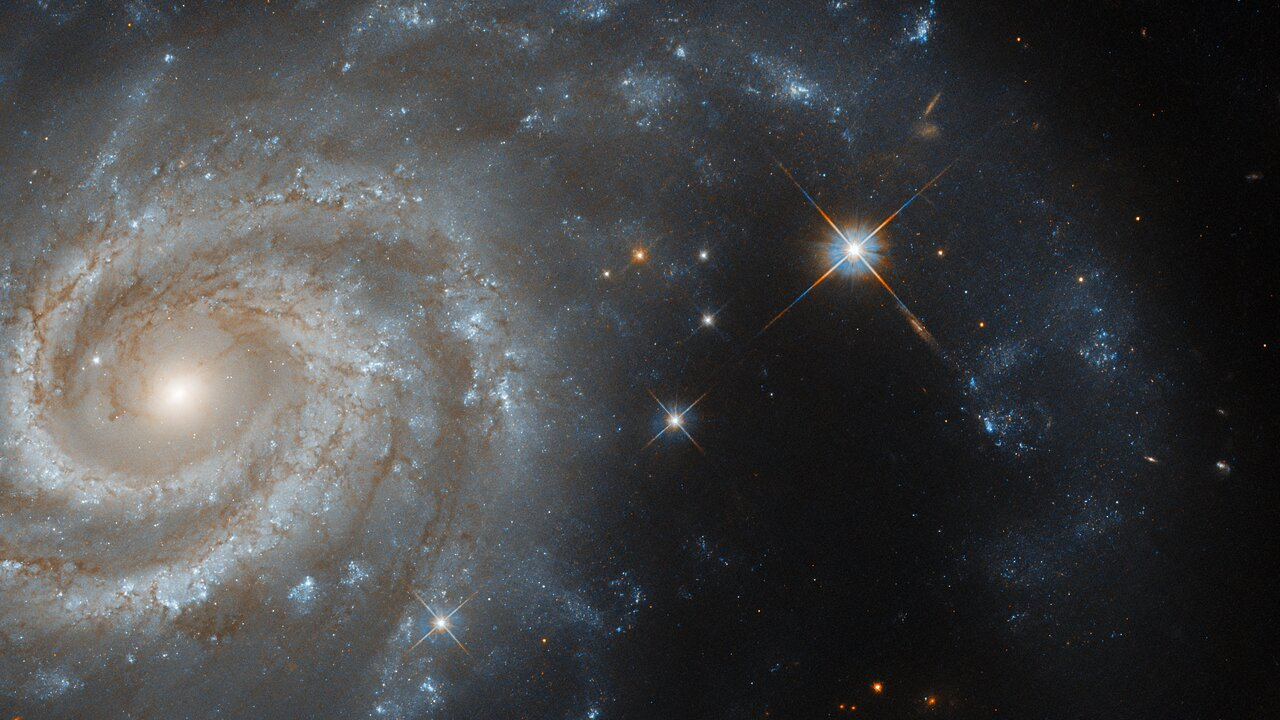This Hubble Telescope photo of a spiral galaxy will take your breath away
The shot shows IC 438, which lies about 130 million light-years from Earth.

Just when we think we’ve seen it all with astronomy photos, the Hubble Space Telescope takes our breath away yet again with a trip to a galaxy far, far away.
I don’t know about you, but when images like this are released, it brings up not only a wave of emotions but also a few moments of pause in even the busiest day to marvel and take in the power of a space telescope and just how captivating our universe is. It doesn’t matter what we are seeing or what galaxy or constellation is before us; the truth is, it magically transports you to a window into the great unknown, giving you a front-row seat to the beauty and mystery of what we can only see through the eyes of a telescope.
Let’s come back down to Earth for a second, so I can explain exactly what we are looking at in the photo above, a newly released image from the NASA/European Space Agency (ESA) Hubble Space Telescope. This is IC 438, a spiral galaxy that’s pretty far away from Earth (130 million light-years, to be exact). It's in a constellation named Lepus, which means "the hare," surrounded by more familiar star patterns like Canis Major, Orion and Canis Minor.
Related: The best Hubble Space Telescope images of all time!
The Hubble photo was originally taken in 2021 so scientists could study the aftermath of a supernova explosion that happened in 2017 (from our perspective here on Earth). Although we cannot see the immediate aftermath or the moment the explosion occurred in this image, it still tells a very important astronomical story.
"With Hubble’s exquisite angular resolution at visible wavelengths, astronomers can now study the stars in the region around the supernova, allowing them to better estimate the age and type of star that exploded," Chris Evans, ESA's Hubble project scientist, shared with me on Tuesday (Jan. 23). "This is an excellent example of where Hubble’s unique capabilities at ultraviolet and optical wavelengths are continuing to give us exciting new views of the universe."
Another fun fact: Lepus is part of a family of 88 constellations highlighted by the International Astronomical Union (IAU). This organization was created in 1919 with a mission to "promote and safeguard the science of astronomy in all its aspects (including research, communication, education and development) through international cooperation," as its homepage states. And, as we’ve learned with every different and unique picture that is taken across the entire universe, there’s a story to be told and a new part of history discovered and to learn from.
Get the Space.com Newsletter
Breaking space news, the latest updates on rocket launches, skywatching events and more!
"Alongside the powerful infrared capabilities of the NASA/ESA/CSA James Webb Space Telescope, Hubble’s imaging and spectroscopy at shorter wavelengths provides us with critical information that we need to further our understanding of objects such as supernovae and other astronomical transients," Evans said.
Join our Space Forums to keep talking space on the latest missions, night sky and more! And if you have a news tip, correction or comment, let us know at: community@space.com.

Meredith is a regional Murrow award-winning Certified Broadcast Meteorologist and science/space correspondent. She most recently was a Freelance Meteorologist for NY 1 in New York City & the 19 First Alert Weather Team in Cleveland. A self-described "Rocket Girl," Meredith's personal and professional work has drawn recognition over the last decade, including the inaugural Valparaiso University Alumni Association First Decade Achievement Award, two special reports in News 12's Climate Special "Saving Our Shores" that won a Regional Edward R. Murrow Award, multiple Fair Media Council Folio & Press Club of Long Island awards for meteorology & reporting, and a Long Island Business News & NYC TV Week "40 Under 40" Award.









